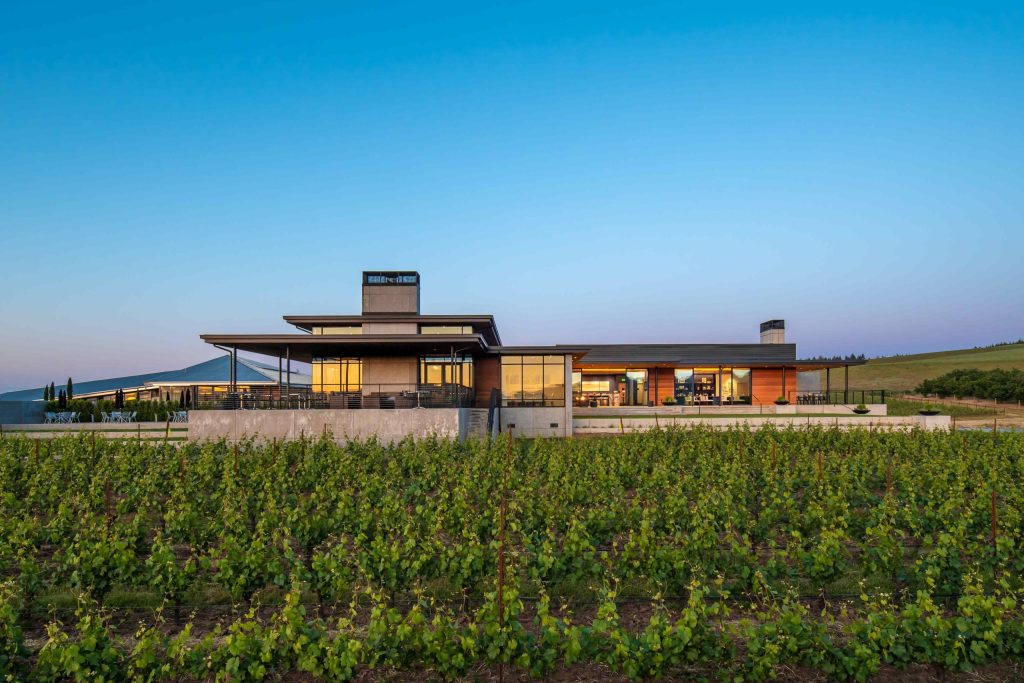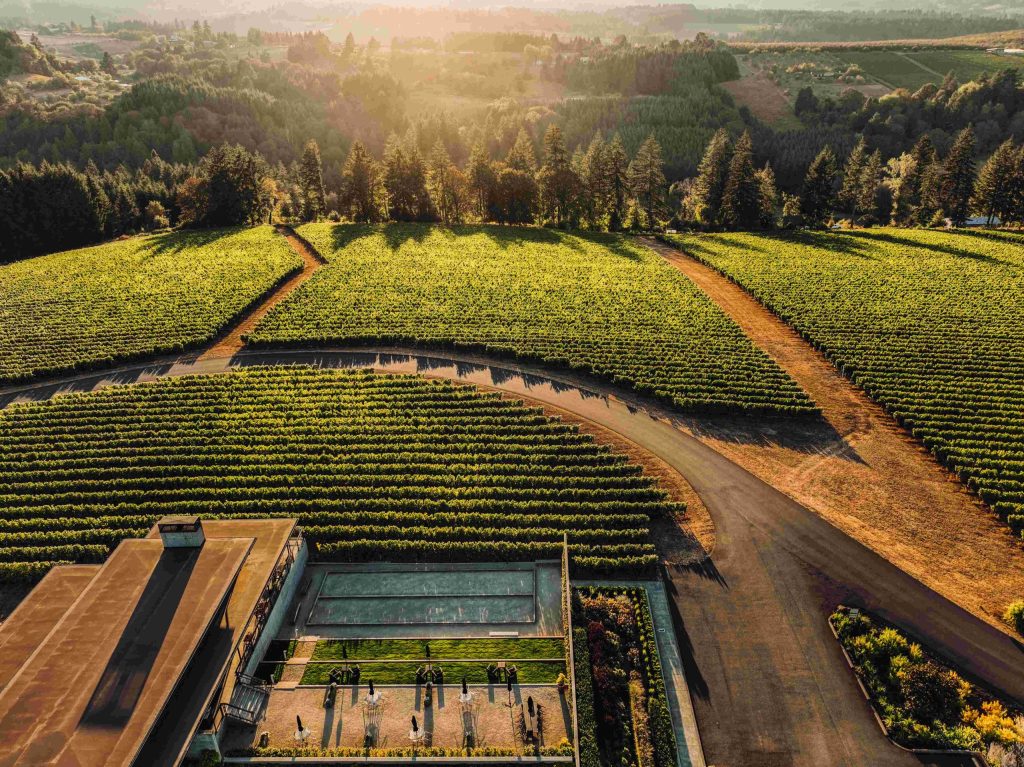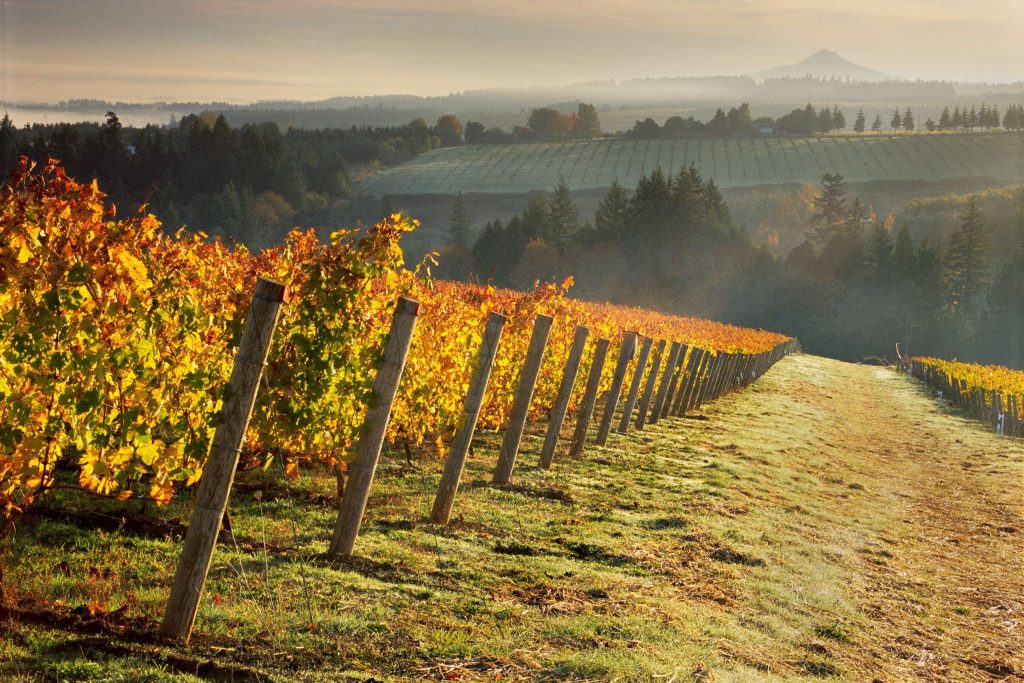This website uses cookies so that we can provide you with the best user experience possible. Cookie information is stored in your browser and performs functions such as recognising you when you return to our website and helping our team to understand which sections of the website you find most interesting and useful.
Ponzi Vineyards: Voldemort vintages, sherpa winemakers and the ‘essence’ of Pinot Noir
One of the pioneers of Oregon winemaking, Ponzi Vineyards entered a new era in 2021 when the family-owned business was acquired by Société Jacques Bollinger. Now its cool-climate Pinot Noirs and Chardonnays are – at last – available in the UK. Richard Woodard finds out more.

It’s 55 years since Dick and Nancy Ponzi packed their family into a Ford F150 truck and headed north out of California into Oregon. Dick had a couple of things on his mind: he hankered after a more peaceful existence after failing to reconcile his work as an aerospace engineer with his opposition to the Vietnam War; and he was on a quest to find an ethereal, Burgundian style of American Pinot Noir.
Oregon viticulture was in its infancy, and its early practitioners had to make a lot of it up as they went along. One of the first three wineries in the Willamette Valley, Ponzi Vineyards was founded in 1970 – and the early years were anything but straightforward.
“Dick had stumbled across a bottle of Burgundy Pinot Noir and it was his ‘aha’ moment, his epiphany,” explains Jean-Baptiste Rivail, the ex-Newton Vineyards boss appointed as Ponzi Vineyards CEO following the winery’s 2021 acquisition by Société Jacques Bollinger.
“He abandoned everything and went up north with his family on a quest to find that wine style. They had to invent a lot of techniques. They tried a lot of different varietals, and they planted ungrafted because they didn’t know it was a normal thing to graft.”
Early endeavours with Chardonnay were disastrous, because the clonal material sent from UC Davis was adapted to the hotter, drier conditions of California – rather than the Willamette Valley’s more marginal climate.
Only much later, when Luisa Ponzi, Dick’s daughter, returned from winemaking school in Beaune, did the truth begin to dawn. “She told her father that they didn’t have much better weather in Burgundy, but they did make pretty good Chardonnay,” says Rivail. “‘So it’s your plants that are the problem.’”
The advent of Dijon and other cool-climate clones was a game-changer. But, while most wineries gleefully ripped out the old UC Davis vines, Dick Ponzi left some in the ground, continuing to experiment to find out how vine and soil might work together.
“Now we have some of the oldest Chardonnay vines in the valley,” says Max Bruening, who has been with Ponzi since 2016, taking over from Luisa Ponzi (now ‘legacy winemaker’) as the first non-family winemaker this year. “We have these wonderful different clones to experiment on, to make the best blends that we can.”
Some of Dick Ponzi’s other ‘mistakes’ have proven to be counter-intuitively far-sighted. At a time when most wineries were prioritising south-/southwest-facing slopes in search of ripeness, Dick also explored cooler sites. “These days, everybody is planting in every aspect because we can do it now [thanks to climate change],” says Bruening. “But some of our oldest vineyards are north-/northeast-facing slopes, planted ungrafted. They’re producing our most exceptional fruit, and there’s no sign of phylloxera.”
By the mid-1980s, Ponzi’s Pinot Noirs were beginning to attract the attention of the American wine press, and these early pioneers became mentors for Oregon’s new wave of producers; Mike Etzel of Beaux Frères, for one, has credited Dick Ponzi as a huge influence on his winemaking.

Rivail and Bruening believe the key to Ponzi’s success is the Laurelwood District AVA, in which the company is the biggest landowner. A sub-appellation on the east side of the larger Chehalem Mountains AVA, Laurelwood is distinguished by its soils, in particular a surface layer of sandy loess deposited on the Jory basalt bedrock by the Missoula glacial lake floods at the end of the last Ice Age.
The nutrient-rich loess gives a leg up to Pinot Noir vines in their youth, producing bright, generous wines with plenty of red fruit character. As the vines mature and penetrate into the basalt – which can take 15 years or more – deeper, spicier flavours emerge, alongside fine tannins and acids.
While Ponzi’s Tavola Pinot Noir takes in a broader range of origins – Lola-Amity for red fruit, Carlton for its dusty tannins and Laurelwood for a touch of spice – the winery’s Laurelwood and Reserve Pinots illustrate the different stages of vine evolution in Laurelwood’s unique soils.
“With Laurelwood Pinot Noir, we want to showcase the Laurelwood district and soil profile, and younger vines within the soil,” explains Bruening. “At 18-20 years, they’re just now approaching that basalt layer. Pinot Noir planted in that loess is very fruit-driven, with bright red fruit: raspberry, strawberry, cranberry; but always an element of spice. With the Laurelwood cuvée I get more black pepper or white pepper, depending on the vintage.”
If the character of Laurelwood Pinot Noir represents spring, the winery’s Reserve Pinot Noir, sourced from its oldest vines, is summer, with a direct correlation to how deep the vine roots penetrate into the basalt – producing tertiary aromas of clove, nutmeg and cinnamon.
Meanwhile, Ponzi’s Paloma Single Vineyard expression – also coming to the UK in tiny quantities, but only available to members of the winery’s Laurelwood Society Wine Club in the US – is something else entirely. Here the vines – planted in 2011-14 at 900ft above sea level – have a much thinner layer of loess to penetrate.
“The vine hits that basalt level much quicker than, say, our Avellana Vineyard,” explains Bruening. “We get small berries and more blueberry flavours. When I started, the wine was massive – the tannins were amazing for the age. Now it’s evolving. There’s still this robustness, but it’s delicate and it’s getting softer. This is one of our stars in the cellar.”
Something else that is evolving is the climate: hence planting Paloma at 900ft, and exploring those cooler, more northerly vineyard orientations. “It affords us the ability to really experiment with different elevations and aspects, which is increasingly important these days as our climate continues to warm,” says Bruening.

“It’s my belief that, if we want to preserve the essence of Pinot Noir as the world knows it to be, we need to be higher, and closer to the coast, to benefit from those cool nights and warmer days.” Laurelwood AVA’s highest elevation is 1,600ft. There are currently no vines there, but Bruening is willing to put money on that changing, and changing soon.
Recent vintages encapsulate the challenges of climate change and unpredictable weather events. While 2019 was a “throwback” year, characterised by a great summer and September rains, Bruening says of 2020: “That’s the Voldemort vintage – that’s the one we don’t talk about.”
What looked set to be a great harvest was destroyed by wildfires and smoke. Ponzi made no commercial Pinot or Chardonnay, but the winery brought in the crop “just to learn, experiment and figure out how to combat a smoke vintage”, says Bruening. He adds: “We learned a tremendous amount about what to do in the cellar from a winemaking standpoint. If it does come back around, we have an incredible amount of information and data.”
Much has changed since Dick and Nancy Ponzi undertook that drive north in 1969, but the underlying winemaking philosophy that they forged in those pioneering years has remained a constant: minimal intervention, soft hands in the winery, letting site, variety and vintage express themselves unhindered.
“We are like sherpas,” says Bruening. “It’s our role to really get or lead these wines to ultimately where they need to go. But you need a great skill set to intervene when things go wrong. We have one chance to nail it – we can’t get on the phone and just get more grapes.”
Rivail adds: “[The Ponzis] had never really conceptualised their winemaking philosophy. They thought everybody was doing things the same way they did: always try to isolate and respect the various terroirs … the idea of being not winemaker-centic, but vintage- and terroir-centric.
“It’s this characteristic of the Willamette Valley, where the winemaker tries to disappear – and really let each vintage and each wine be its own star.”
The wines of Ponzi Vineyards are distributed in the UK by Mentzendorff:
Related news
Turbulent year for fine wine affects revenues at Berry Bros. & Rudd

